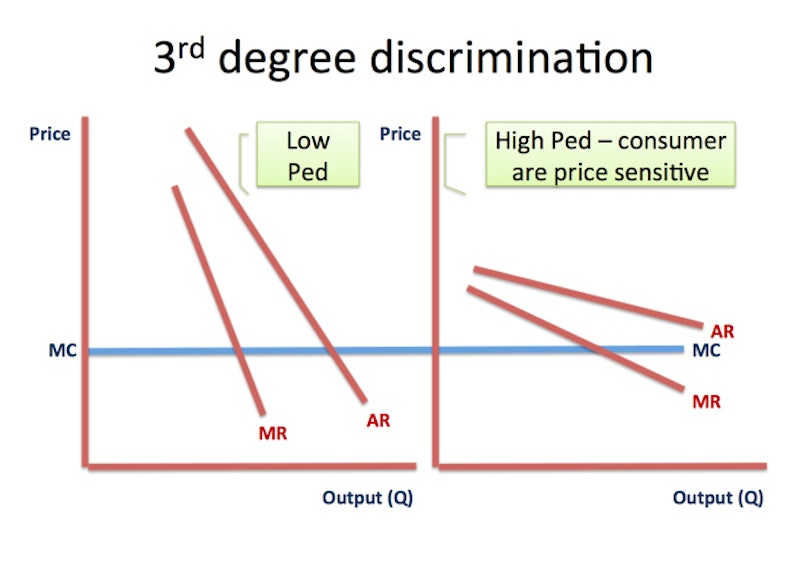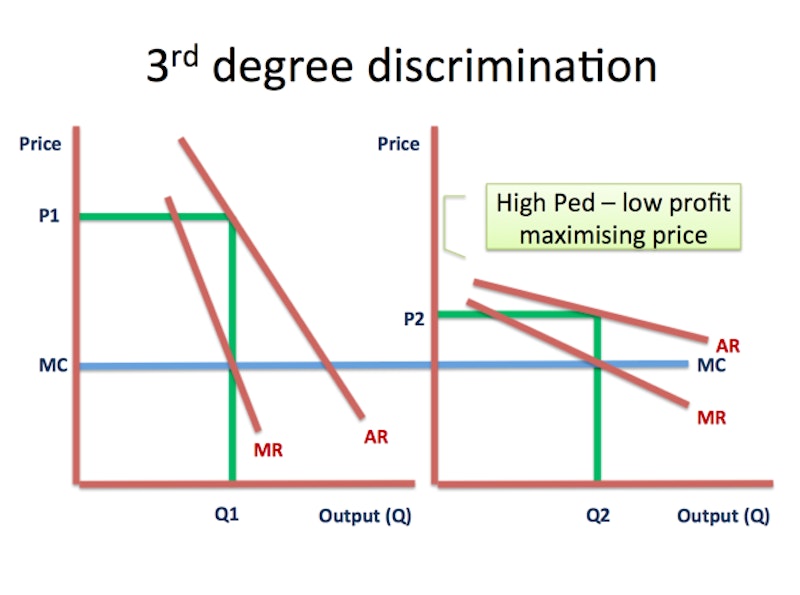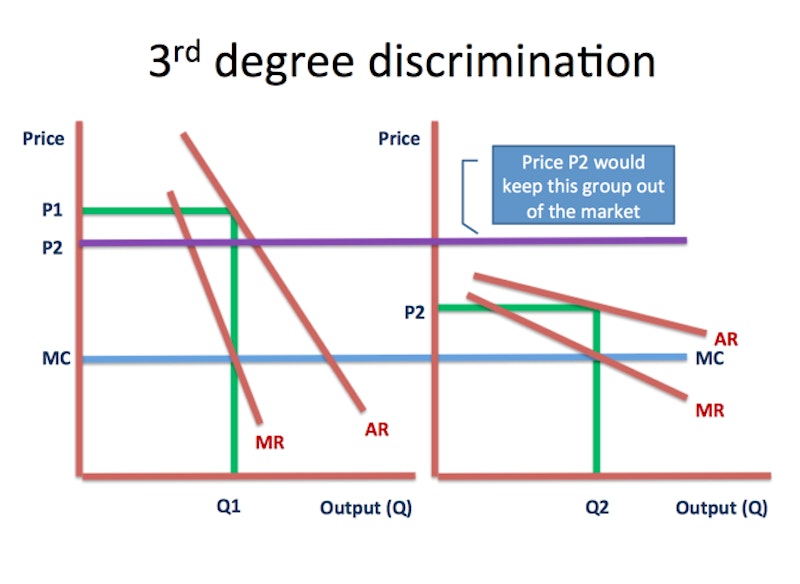Study Notes
Monopoly - 3rd Degree Price Discrimination
- Level:
- A-Level
- Board:
- AQA, Edexcel, OCR, IB
Last updated 21 Mar 2021
This is the most frequent price discrimination and involves charging different prices for the same product in segments of the market. Third degree discrimination is linked directly to consumers' willingness and ability to pay for a good or service. It means that the prices charged may bear little or no relation to the cost of production.

The market is usually separated in two ways: by time or by geography. For example, exporters may charge a higher price in overseas markets if demand is estimated to be more inelastic than it is in home markets.
In the peak market the firm will produce where MRa = MC and charge price Pa, and in the off-peak market the firm will produce where MRb = MC and charge price Pb.Consumers with an inelastic demand will pay a higher price (Pa) than those with an elastic demand who will be charged Pb.
Two Part Pricing Tariffs
- Another pricing policy is to set a two-part tariff for consumers.
- A fixed fee is charged + a supplementary "variable" charge based on units consumed.
- Examples: taxi fares, amusement park charges
- Price discrimination can come from varying the fixed charge to different segments of the market and in varying the charges on marginal units consumed (e.g. discrimination by time).



Product-line pricing
- This occurs when there are many closely connected complementary products that consumers may be enticed to buy. It is frequently observed that a producer may manufacture many related products.
- They may choose to charge one low price for the core product (accepting a lower mark-up or profit on cost) as a means of attracting customers to the components / accessories that have a much higher mark-up or profit margin.
- Examples: manufacturers of cars, cameras, razors and games-consoles
- Discriminatory pricing techniques may take the form of offering the core product as a "loss-leader" (i.e. priced below average cost) to induce consumers to then buy the complementary products once they have been "captured".
You might also like
Shifts in Market Demand
Study Notes
Coffee Market
Study Notes
Monopoly Power in Markets
Study Notes
Price Elasticity of Demand and Indirect Taxes
Topic Videos
Elasticity and Total Revenue (MCQ Revision Questions)
Practice Exam Questions
Economics of Monopoly (Revision Quizlet Activity)
Quizzes & Activities
Daily Email Updates
Subscribe to our daily digest and get the day’s content delivered fresh to your inbox every morning at 7am.
Signup for emails